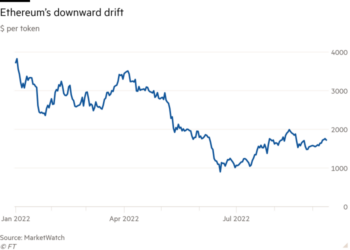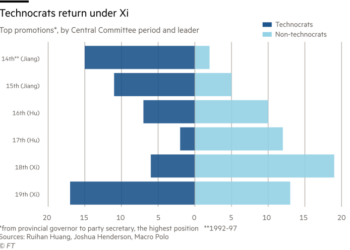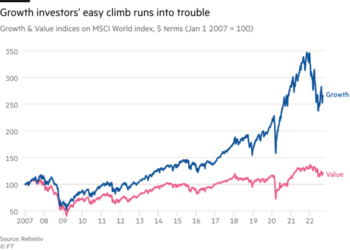The move to hybrid working over the past two years has thrown up a range of challenges for businesses — from how to bring remote teams together, to integrating new staff. Many managers are looking at how they have traditionally done things and asking if there is a better way.
Digital start-ups are answering that question, through challenging the conventional ways technology is used in workplaces and developing a range of tools that aim to make hybrid working more effective.
One of the main issues for hybrid workplaces is the difficulty of replicating the valuable connections we make through in-person contact. Many employers have responded by organising teams to come into the office on specific days. But this can slow down decision making — the “let’s talk about it when we’re in the office” effect — and leave workplaces alternately overcrowded and near empty.
It is a problem that Tushar Agarwal, co-founder and chief executive of Hubble, is trying to solve. “We realised businesses were finding it hard to achieve the right balance of office and remote working for their teams, and that was affecting their office budgets,” he says.
Hubble has developed tech that helps employers to analyse how their office space is used, and where efficiencies can be made. Companies calculate their ideal mix of office space and “flex” their budget between fixed properties, such as a headquarters, and building a network of “on-demand workspaces” for remote workers, explains Agarwal. The tech then helps employers to find and book remote-working spaces. It can even design perks for homeworking teams, such as organising a delivery of cocktail-making kits to employees to replace a Friday drinks trolley.
Agarwal estimates that clients have saved about 30 per cent, compared with pre-Covid office costs, by going hybrid. Employees can access workspaces that are closer to where they live, if they do not want to commute to the main office. The same applies if a number of colleagues live in one area and want to work together.
This personalisation of office space shows the potential for tech to solve practical problems associated with hybrid working. Other entrepreneurs, such as Anna Rasmussen, are trying to overcome the personal barriers created by hybrid working: how to keep employees both happy and productive. Rasmussen is founder and chief executive of OpenBlend, which builds performance management software that combines conventional objectives with other factors such as wellbeing and motivation.
“One of the main problems with hybrid work is that you can’t just walk past people and see how they’re feeling, so if someone’s struggling you might not know about it,” Rasmussen says.
OpenBlend allows managers and their teams to see the status of a task at any given moment. It also helps the manager understand what personal factors might affect the success of the team’s work.
OpenBlend was launched before the pandemic but Rasmussen says demand has grown. “With the Great Resignation, we’re seeing clients having to onboard lots of new team members. As a manager, it’s easier to get the best out of your direct reports when you really know them . . . It’s made the onboarding process easier for everybody,” she says.
This increased churn of staff also raises problems around pay and benefits. Zara Nanu is co-founder and chief executive of Gapsquare, a company that monitors payroll data to ensure a company is remunerating staff fairly. She says that when employers recruit, they will often offer a salary at the market rate, rather than benchmarking against what they pay other employees doing the same job. This can create pay gaps because the market rate is usually higher than the salary given internally.
Hybrid working is also exacerbating pay gaps, according to Nanu. “[Pay] is often about who’s in the meeting or the office on the day when a new project is discussed, or who’s in the room when a new role is created. What I’ve seen from many of my customers in the past year is that a lot of the time the people still going into the office are men. So then we have to ask, how do we build structures to ensure people aren’t left out?”
During the pandemic the gender pay gap dropped down the priority list, with the UK government suspending the requirement for companies to publish pay gap figures. Gapsquare data should allow businesses to see if proximity bias is affecting salaries.
Nanu warns that the way the information is interpreted depends on who is reading it. “We have to look at how companies use the data. Will they use it to create fair pay or will they say ‘more people should come into the office’? Because we see from the data, the people who come into the office get the promotions.”
Even before the arrival of the Omicron variant, the slow return to many physical workplaces in 2021 shows that staff are unlikely to go back to the old ways of working.
As Agarwal puts it: “Pre-Covid, the office was one-size-fits-all, and it didn’t work. During Covid, working from home was one-size-fits-all, and it didn’t work. Post-Covid, the working week will be personalised to the organisation, team and individual. We’ve seen personalisation enter every other aspect of our lives and it’s an incredibly exciting watershed moment to finally give employees more power in deciding where and how they work.”
For Rasmussen, the bonus of new workplace tech is that it allows companies to be more agile in their move to a hybrid working environment. Rather than installing complicated software solutions, individual managers can start by trialling them, she argues.
“There doesn’t need to be all these processes or procedures, these are just two people having a conversation — a better conversation — and that should be the same whether they’re at home or in the office.”











